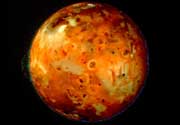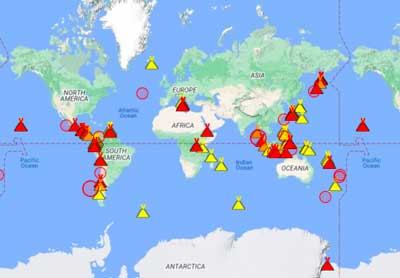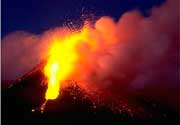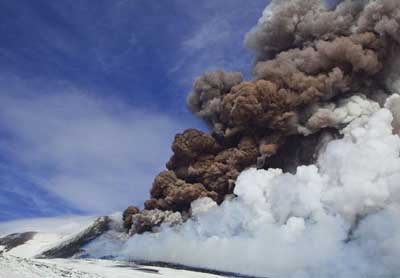Chikurachki stratovolcano forms highest peak on Paramushir Island in the northern Kurile island arc just south of Kamchatka Peninsula. It is one of the region's most active volcanoes.
The volcano itself is a relatively small cone, compared to other volcanoes of the Kurile Islands, but it is built on top of the high-lying remnants of an older and now extinct predecessor volcano. The dominantlyc basaltic one has steep slopes with little erosion and a shallow summit crater of approximately 450 m in diameter. The upper part of Chikurachki's cone is red, caused by oxidized basaltic-to-andesitic scoria deposits.
Eruptions of Chikurachki volcano:
There are 2 principal types of eruptions from Chikurachki: 1) frequent strombolian (mildly explosive) eruptions, such as in 1958, 1961, 1964, 1973, 2002, 2003, and 2) (sub-)plinian (extremely violent and dangerous) explosive eruptions such as in 1853 and 1986.
The
strombolian-type eruptions usually last between several days to few weeks, and produce ejections of incandescent lava reaching 100-500 m height above the crater, but can occasionally produce ash plumes of up to 3 km height.
Many eruptions from Chikurachki are accompanied by lava flows. Some have reached the sea and form capes on the NW coast, and there are young lava flows on the upper eastern flank.
Basaltic plinian eruptions are a globally rare phenomenon, but common at Chikurachki volcano, and it is estimated that they have occurred every 100–200 years. Such eruptions - similar to the Icelandic Grimsvötn's eruption in June 2011 - are capable of producing tall ash plumes reaching 10-20 km and pose a significant hazard to aviation in an area densely populated by flight routes from N-America to Asia.



